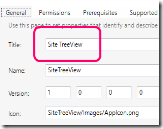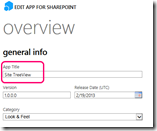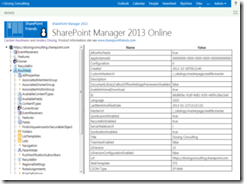How do you manage/enforce licensing on a fully SharePoint hosted app with JavaScript only?
You need a couple of things:
1. JavaScript that checks for the license.
2. Landing pages, telling you that your license has expired or is invalid.
3. An app that helps you creating test keys for testing your App with licensing.
Is the License code valid for the App store?
Yes, the code is valid, because it is implemented in Site Tree View app that has been approved for the App Store.
1. JavaScript
After searching the web for a solution, I found this http://social.msdn.microsoft.com/Forums/en-US/appsforsharepoint/thread/f022893c-3927-4471-8ae8-7dbcd0b8e5fe
However I needed a more clean solution and rewrote the script. Please note that the code depends on jQuery.Cookie.js, JQuery.xml2json.js plugin and the SP client side libraries.
window.SF = window.SF || {};
window.SF.LicenseConstructor = function($) {
var licenseCollection;
var response;
var licenseSettings;
this.Check = function (s) {
licenseSettings = s;
var token = $.cookie(licenseSettings.productId);
if (token) checkToken(token);
else {
licenseCollection = SP.Utilities.Utility.getAppLicenseInformation(licenseSettings.context, licenseSettings.productId);
licenseSettings.context.executeQueryAsync(onRetrieveLicenseFromSPSuccess, onRetrieveLicenseFromSPFailure);
}
};
function onRetrieveLicenseFromSPSuccess() {
var topLicense;
var encodedTopLicense;
if (licenseCollection.get_count() > 0) {
topLicense = licenseCollection.get_item(0).get_rawXMLLicenseToken();
encodedTopLicense = encodeURIComponent(topLicense);
} else {
Redirect(licenseSettings.licenseUrl);
}
var request = new SP.WebRequestInfo();
request.set_url("https://verificationservice.officeapps.live.com/ova/verificationagent.svc/rest/verify?token=" + encodedTopLicense);
request.set_method("GET");
response = SP.WebProxy.invoke(licenseSettings.context, request);
licenseSettings.context.executeQueryAsync(onVerificationCallSuccess, onVerificationCallFailure);
}
function onRetrieveLicenseFromSPFailure(sender, args) {
Redirect(licenseSettings.licenseUrl);
}
function onVerificationCallSuccess() {
var xmltoken = response.get_body();
$.cookie(licenseSettings.productId, xmltoken, {
expires: 180
});
checkToken(xmltoken);
}
function checkToken(xmltoken) {
var token = $.xml2json(xmltoken);
switch (token.EntitlementType.toLowerCase()) {
case "free":
break;
case "paid":
break;
case "trial":
if (token.IsEntitlementExpired.toLowerCase() === "true") Redirect(licenseSettings.expiredUrl); // Trial app has expired!
break;
}
}
function onVerificationCallFailure() {
Redirect(licenseSettings.licenseUrl);
}
function Redirect(url) {
window.location.href = url;
}
return this;
};
window.SF.License = new SF.LicenseConstructor(jQuery);
2. Landing pages
Include the SF.License.Check(…) in be beginning of you document onload after the SP libraries has loaded.
var settings = {
context: SP.ClientContext.get_current(),
licenseUrl: "http://domain/nolicense.html",
expiredUrl: "http://domain/trialexpired.html",
productId: "{[App ID guid]}"
};
SF.License.Check(settings);
Finally you need to specify the verificationservice endpoint in the AppManifest.xml for your app.
https://verificationservice.officeapps.live.com/ova/verificationagent.svc

3. Test
Now you need to test you licensing code. Do this by installing a test License key, so you are able to test your app. Further reading on the subject can be found on Licensing your apps for SharePoint.
Direct link to the license manager app: 4760.LicenseSPAppSample.zip







